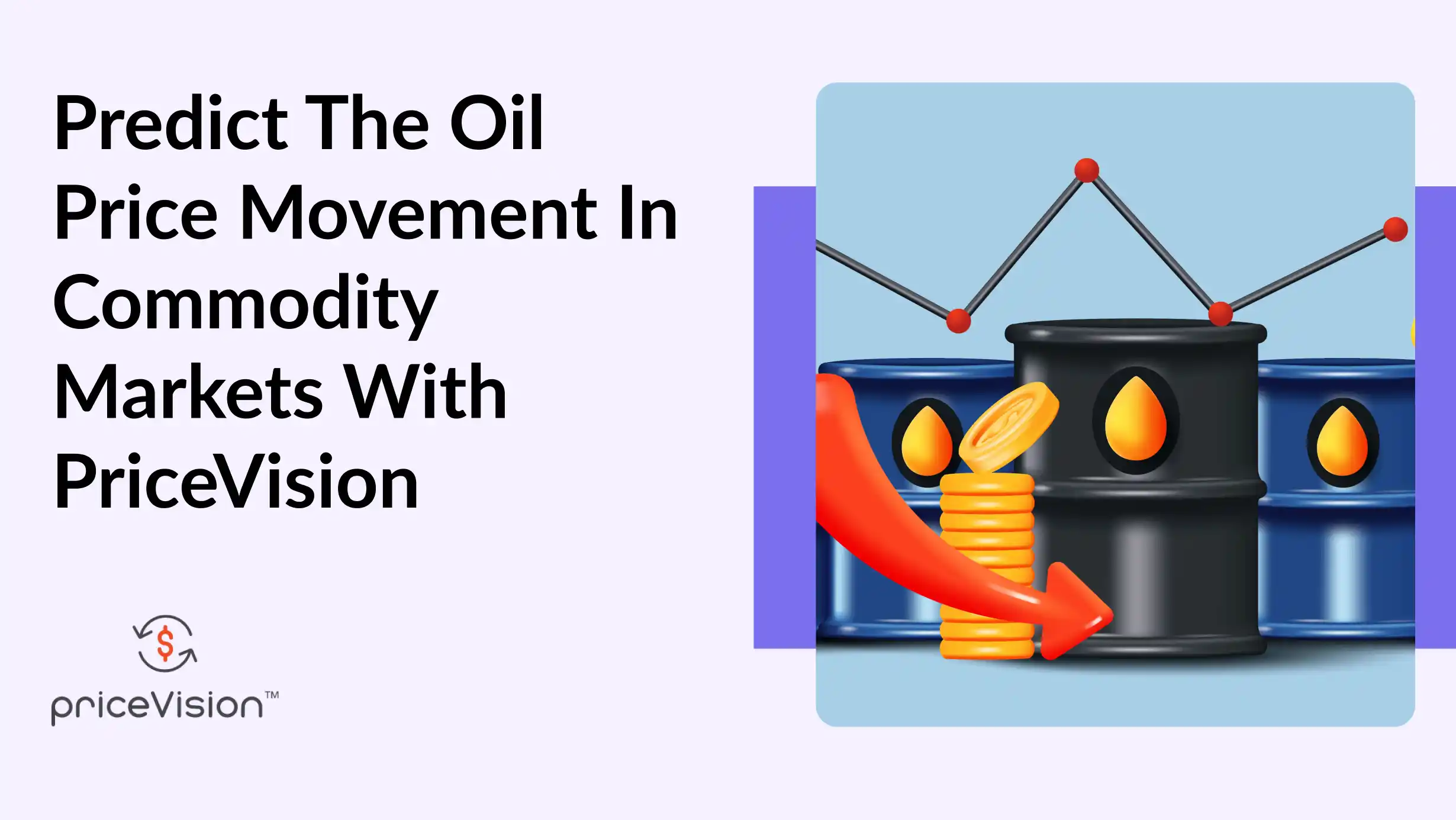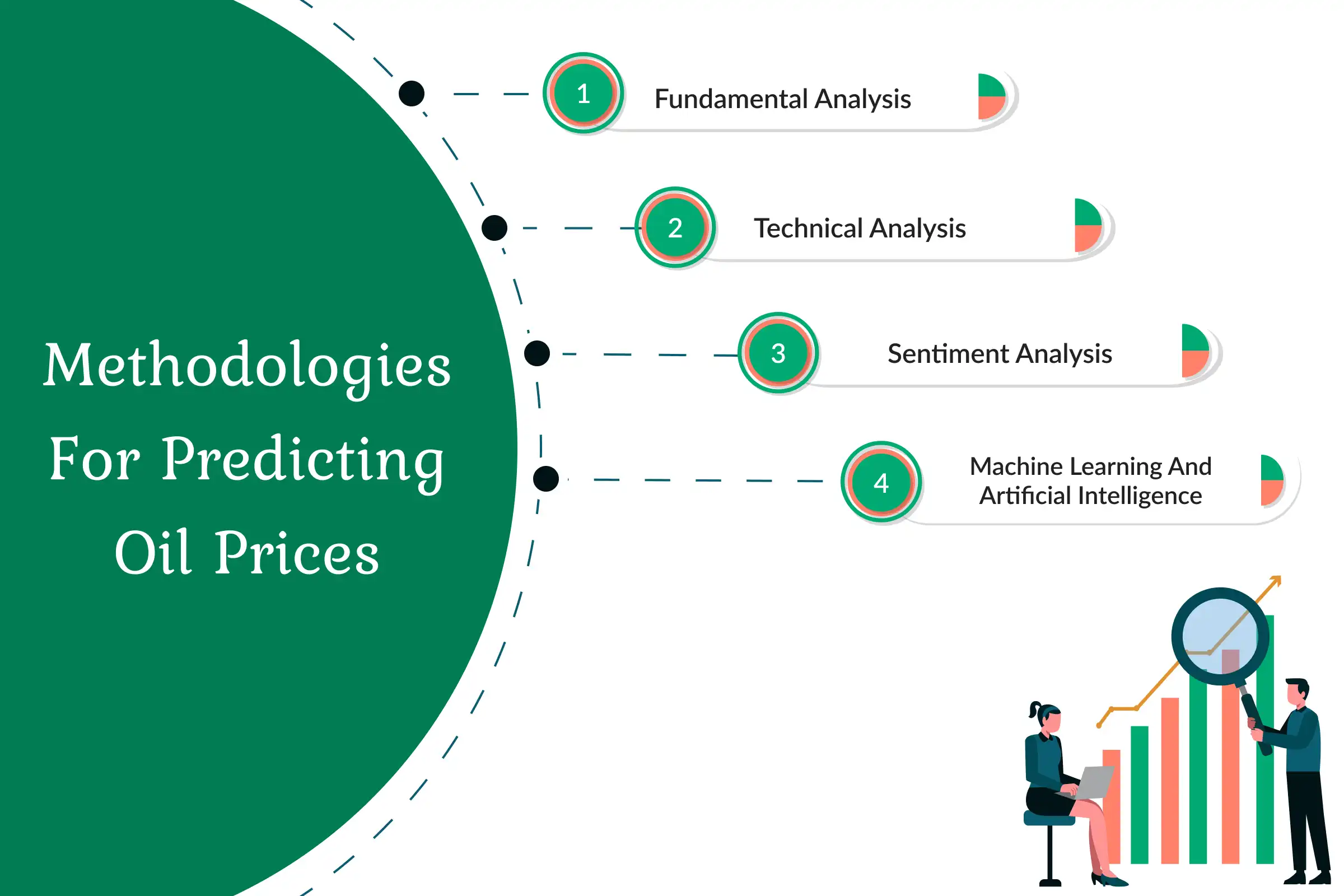Predict the Oil Price Movement in Commodity Markets with PriceVision

The global commodity markets never centered on one item. Multiple items are considered commodities in the market. The hotbeds of volatility and speculation always revolve around oil on a global level. The multilevel connection among geopolitics events, supply demand dynamics, and economic indicators predicts the oil price movements over the globe.
Oil prices require accurate predictions as it impacts the global economy. The supply of oil varies as per the demand which eventually reflects the economic development, financial markets, and politics. To invest in oil as a commodity, an investor should understand the game of the oil price movement. PriceVision is an artificial intelligence-powered tool that can help you in predicting the oil price in the market. In this article, we will dive into understanding the factors that can influence oil prices and the methodologies produced by the analysers.
Understanding the dynamics of oil prices
Prediction is an important task that needs to be done before investing. It is necessary to predict future of oil price movements and comprehend the complex factors that define the current state of the oil market. The factors that determine oil prices are Geopolitical events, Economic indicators, Technological advancements, and Supply-demand dynamics. These terms hold a major value in determining oil prices. Let’s understand them a little more.
- Geopolitical Events: One of the major factors that produces the oil prices is geopolitical events. Oil-producing regions like the Middle East can disrupt the oil supply due to tensions between borders. Also, OPEC(Organization of the Petroleum Exporting Countries) can influence oil prices to a larger level. Investors must monitor the potential disruptions in oil supply.
- Economic Indicators: It include both global and regional indicators that play a vital role in shaping oil prices. It influences factors like GDP, Inflation rates, and interest rates that provide overall insights into the economic health of the particular region. Robust economic growth can lead to increased demand for oil and can drive it to a higher level.
- Technological Advancements: It is the advancements in the energy sector that can impact oil prices. Along with the development and adoption of energy sources like electric vehicles- it can alter the need for oil. Such innovation can affect the supply side which influences the prices of the oil. Analysts need to be actively involved in monitoring the oil price predictions.
- Supply Demand Dynamics: The foundation of oil prices is supply and demand. An imbalance between the global supply and the requirement can lead to price fluctuations. Also, some natural disasters, geopolitical conflicts, and disruptions can restrict the oil supply in any particular region.
Methodologies For Predicting Oil Prices
For predicting an oil price, it is a must to understand the methodologies being followed in producing the right output. Oil prices vary as per the movements. Analysts are employed all over the world to understand the complexities and produce required predictions.

- Fundamental Analysis: It involves examining the economic factors that are responsible for the oil prices. Scrutinizing the supply and demand helps analysts understand the requirements properly and forms a holistic view of the market. These underlying factors help in making informed predictions of future trends. Moreover, analysis requires regular monitoring of a myriad of factors and commodity prices.
- Technical Analysis: It relies on the history of the price data and market statistics that help in identifying patterns and trends. Analysts are required to produce a chart, graph, and some technical indicators that help in forecasting the future price movement. It has limitations developed due to unexpected events that may or may not be present in history.
- Sentiment Analysis: It implies the behavior of the investor and market sentiments. Social media, news, and market commentaries are analyzed to understand the details required. Results can be both positive and negative which can influence trading decisions along with oil prices. Although, it may or may not be always precise.
- Machine Learning And Artificial Intelligence: The craze of artificial intelligence and machine learning has touched heights in the tech world. Implementing artificial intelligence with the addition of machine learning can produce amazing results. For predicting the oil price, a vast amount of data and patterns can help in making the right prediction. PriceVision is an amazing AI tool that provides results based on the current data in the market.
Challenges and Uncertainties in Predicting Oil Prices
While implementing anything from scratch is not easy, similarly there are some challenges in the oil price prediction. There are numerous methodologies through which one can predict the oil prices. It is necessary to understand the challenges associated with the price prediction. Several challenges are placed under the following categories:
- Geopolitical Uncertainties: These types of possibilities are often unpredictable but can have an immediate impact on oil prices. Companies carefully monitor price fluctuations and optimize them by using an oil trade procurement strategy to ensure cost-effective sourcing. Conflicts due to any political tension can fluctuate oil prices that can’t be easily identified by sophisticated predictive models.
- Supply Chain Disruptions: It can have a major impact on the commodity market to a greater extent. Natural disasters or accidents/technical failures can lead to supply chain disruptions. Such events are unpredictable and can significantly alter the supply chain balance leading to drastic changes in oil prices.
- Market Speculation: Oils contribute to a major portion of day-to-day activities that are susceptible and can distort prices. Traders and investors should alter their investments as per the market. These price movements are not necessarily reflective.
Conclusion
Prediction is not an easy task, it requires proper research and market trends before investing. Commodity price varies as per the requirements. It remains a formidable challenge that influences the complex market. Analysts must get involved in producing updates by analyzing the combination of commodity selling and purchasing. Such calculations can be easily done by using advanced technologies like Machine learning to navigate uncertainties. Also, the dynamic nature of geopolitical events and other factors can bring unpredictability.
The future will be completely dependent on the use of machine learning and AI tools that help in adopting a multifaceted approach to the analysts. It will eventually help investors, policymakers, and other stakeholders to respond in the ever-changing landscapes of the oil price market.